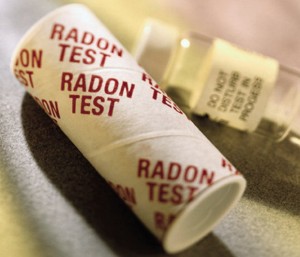As radon awareness grows and more people become aware about the dangers associated with this silent killer, we’ll begin to hear about more areas that are particularly susceptible to it. It turns out that Iowa happens to be right in a radon hotspot.
Elevated Radon Gas Is a Big Problem In Iowa
 The United States Environmental Protection Agency estimates that more than 21,000 Americans die each year due to elevated radon gas exposure. As such, it is the second leading cause of lung cancer and the leading cause in non-smokers.
The United States Environmental Protection Agency estimates that more than 21,000 Americans die each year due to elevated radon gas exposure. As such, it is the second leading cause of lung cancer and the leading cause in non-smokers.
People may live with extremely high levels of the deadly gas in their home for years — decades even — without ever knowing it’s lurking there. It is odorless, colorless and tasteless which means it’s virtually indetectable. In fact, the only way to discover it’s presence is to run a test specifically for it.
One Iowa resident tested her home for radon shortly after attending the Iowa Cancer Consortium presentation in 2012. Cynthia Wolff bought a couple DIY radon testing kits and checked the elevated radon gas levels in her Northwest Iowa home. She also tested the clinic where she worked, another place where she spent a majority of her time.
“My home was at a 40.”
That’s 40 picocuries per liter (pCi/L) which is ten times the recommended action limit as set by the U.S. EPA. The limit — at 4.0 pCi/L — is the highest level one can safely live with. Anything higher than that level requires mitigation, which involves installing a ventilation system to remove the deadly gas from inside the home or residence. Exposure to 4.0 pCi/L is the equivalent of smoking a half a pack of cigarettes per day. Every 15 pCi/L above that limit is equal to another full pack. So in Wolff’s case she was being exposed to elevated radon gas at the equivalent of smoking three and half packs of cigarettes per day.
That means her risk for contracting lung cancer is extremely high depending on how long she was exposed to that amount of elevated radon gas.
Wolff followed up with the test by hiring experienced professional to install a mitigation system.
“I had mitigation done on my own home — as fast as I could get them out there.”
She went on further to say that her clinic — where she works — was found to have 28 pCi/L. She encouraged her employees to test their homes, as well.
“Everyone in my office also was high — in the danger zone,” Wolff said.
Test Your Home for Elevated Radon Gas Immediately
The Iowa Department of Public Health estimates that there are 400 Iowans every year who die as a result of radon-induced lung cancer. In comparison, those numbers are about the same as annual traffic fatalities in the state. It’s a big deal, and it’s a problem that many have no idea about.
It’s time to get in the know. Read up on elevated radon gas and it’s associated dangers. You can find plenty of information here at Radon Resources. You can also read the source article linked below.
Via: The Gazette (Iowa)


